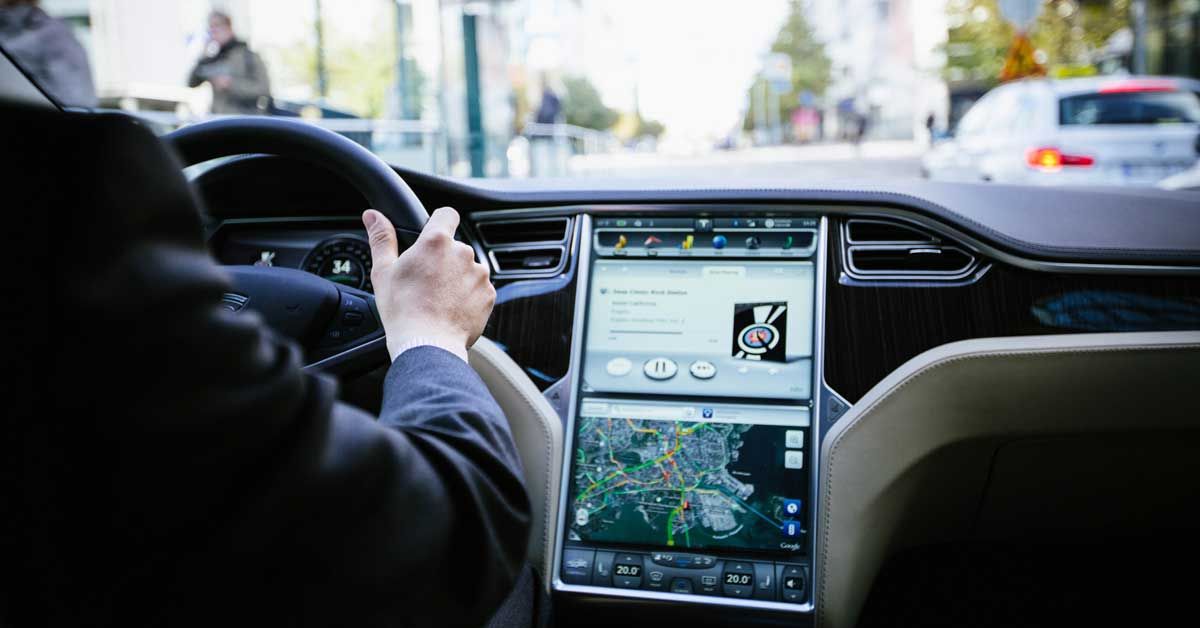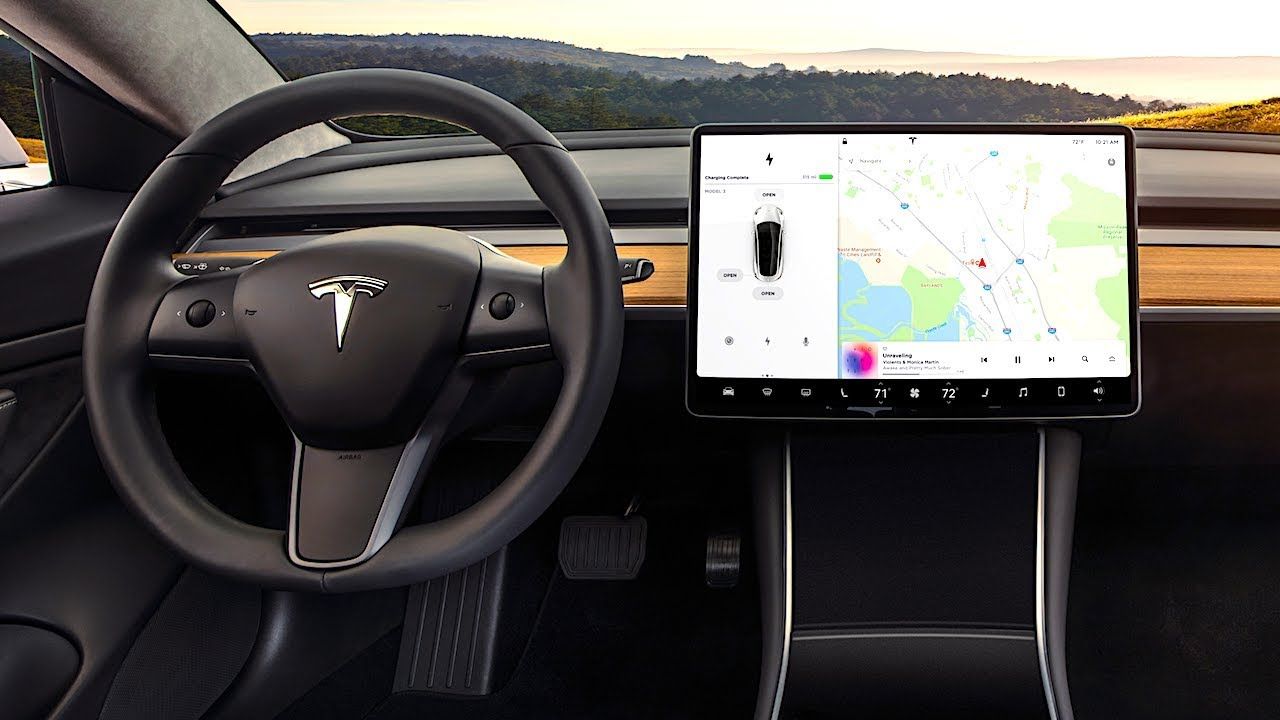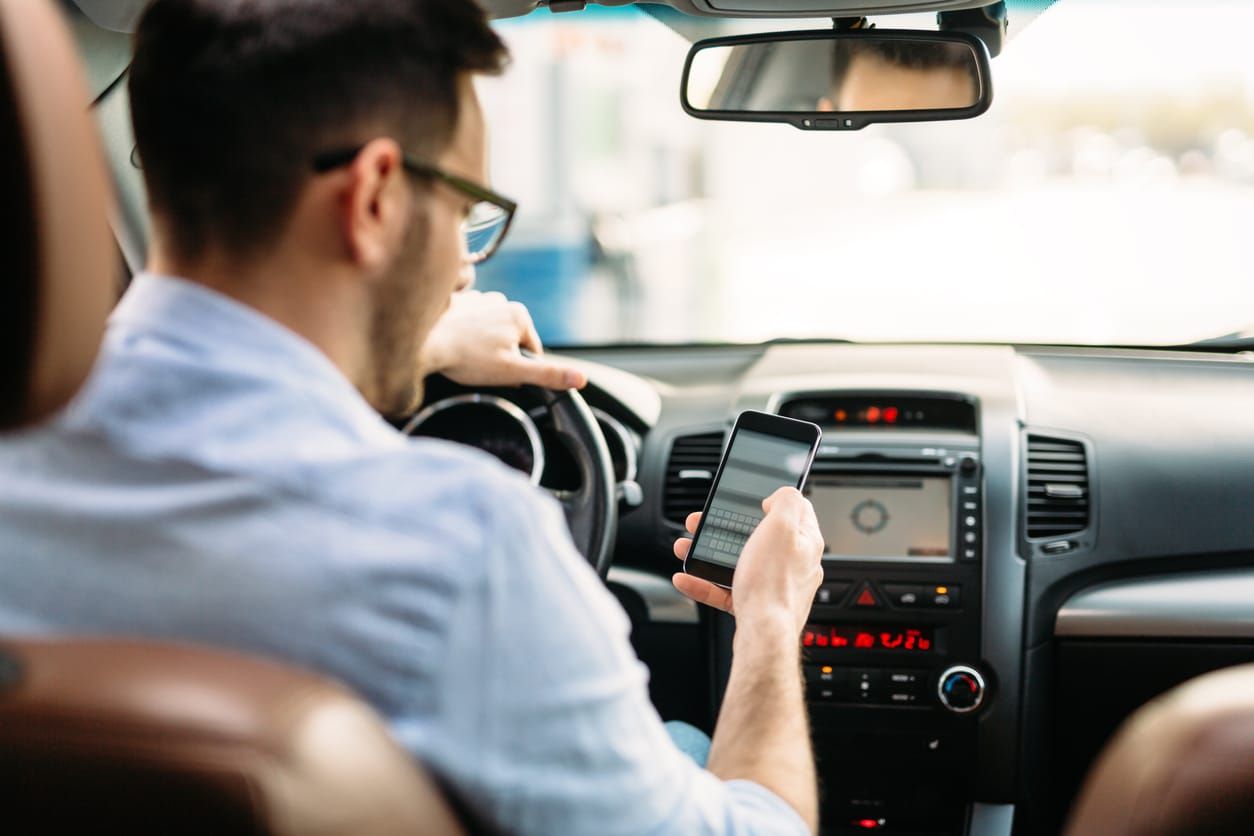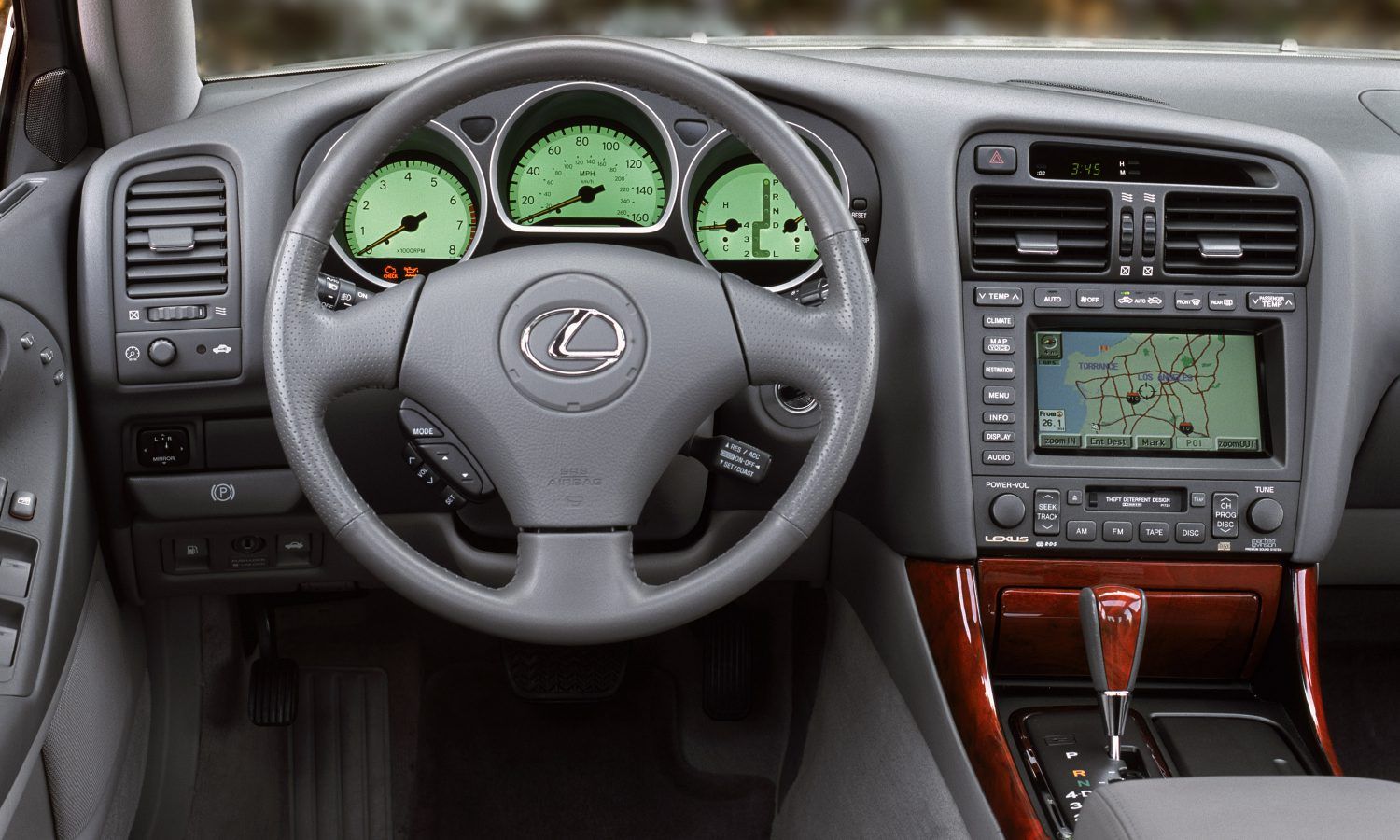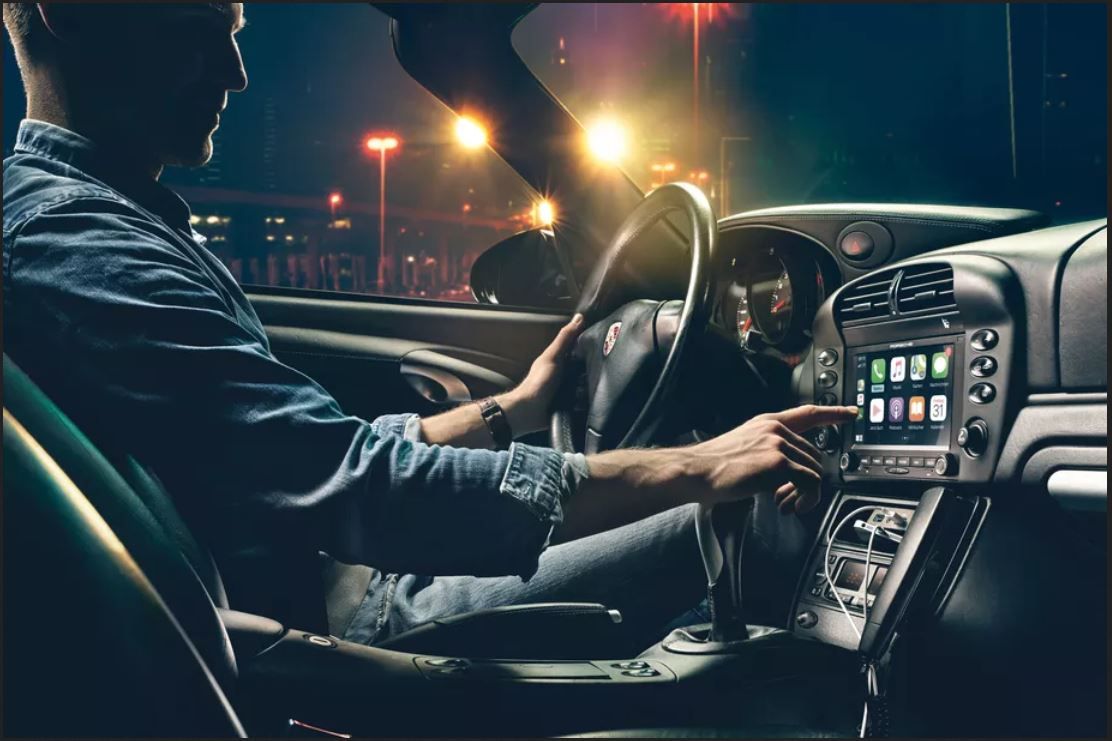In 2011, Samsung launched the first Galaxy Note device, the first big-screen smartphone. It was initially ridiculed for suggesting that future devices would get bigger and bigger until we were carrying notebook-sized devices in our pockets. People didn’t think this big screen idea would ever catch on.
But here we are in 2020, and the current crop of smartphones have comparatively massive displays, some so big that the device needs to fold in half to fit in your bag or pocket. Phone screens aren’t the only displays we regularly use that have gotten almost comically big – the same trend exists in in-car infotainment displays.
Smartphones are great fun to use and they can be useful tools, and the same is true with cars, but there’s a point at which the technology intersects and creates more problems than it solves. Car screens have become massive, disconcertingly so, and it’s getting to a point of being detrimental to the average person’s driving and ownership experience.
Think of a Tesla interior, or the giant vertical tablet grafted onto the dashboard of the Ford Mustang Mach e; these screens are bigger than the average laptop, let alone the average smartphone, and you have no choice but to take your eyes off the road to direct your finger at the button or slider you need to adjust.
Giant screens in car interiors are dangerous, unnecessary, and they date vehicles as soon as the technology is updated, which tends to happen on a much faster timeline than the rest of the automotive industry. We don’t need giant screens to enjoy our cars, and here’s why.
They're More Distracting Than Cell Phones
Touchscreen devices are doubly distracting in that not only do they demand full attention from your eyes, but there is no physical feedback from touching a screen like there would be when reaching for a dial or switch on the dashboard. Interfaces on screens move around and change, which makes it much harder to commit common actions to muscle memory, like adjusting the temperature or skipping a song.
Scale that up to a laptop-sized screen beaming at your eyes from the middle of your dashboard, and you'll have to resist the distractions blinking at you even harder than you would resist looking at a cell phone mounted to your dash. It's easier for a smaller screen to fade into your peripheral vision, though it's still a distraction.
Researchers at the University of Utah found that the increased functionality of these screens causes sensory overload. The Globe and Mail wrote, "The team has found that a lot of the technology created to enhance convenience is actually overloading brain mechanisms, resulting in driver distraction."
Driving assists like lane-keeping or radar-guided cruise control can also give us the false sense of security that we can afford to look away from the road to adjust something on the center screen because we assume the car will look out for us. It may be able to do so in limited situations, but those systems don't work in all conditions.
More worryingly, as cars with these systems start to age and develop issues, eventually the sensors could stop working and suddenly the driver can no longer rely on that artificial safety net to keep them from veering out of their lane while they look for a new Spotify playlist.
According to Reuters, Jake Nelson, AAA Director of Traffic Safety Research and Advocacy, said, “just because it’s built into the car doesn’t mean it’s safe to use. You can’t make the assumption that using technology like this while you’re traveling down the road at 70 mph is going to be safe."
They Don’t Age Well
Technology, perhaps more than anything, dates a car from the moment it leaves the showroom. It's hardly surprising that some of the first real tech-heavy cars of the 2000s have depreciated like a bowling ball rolling down a hillside. You can get some of these once-expensive luxury cars for quite cheap now, but you'll be dealing with some pretty outdated interfaces and services that are no longer supported. Just like you wouldn't want a BlackBerry Curve from 2007 to replace your iPhone X, using an old car's infotainment system will be a similarly clunky and outdated experience.
There are a few exceptions to this rule. GM experimented with in-car touchscreens in the late 1980s, using an in-dash CRT touch display to adjust HVAC, audio controls, and basic trip computer settings. This system found its way into the Buick Riviera and Reatta, as well as the Oldsmobile Toronado Trofeo.
It didn't last very long though. GM ditched the touchscreen in the early-90s due to increasing complaints from its customers that the screen was unintuitive and distracting. Compared to subsequent touchscreen systems though, GM's was quite simple, and it's that simplicity that has allowed it to age rather well. Nowadays, it's a novel feature that draws people back to those few models that had it, but you won't hear anyone raving about the early iDrive system in their used BMW.
But the true killer for aging infotainment systems is the reliance on smartphone connectivity. We have Android Auto and Apple CarPlay now, but those are still fairly recent technologies and not all new cars support both standards, so buying a used car with the hope of getting either one is a gamble.
Beyond that though, who's to say that in ten years' time, we haven't moved on from Android and iOS platforms and smartphones in the year 2030 no longer support infotainment systems that use Google's and Apple's standards. This would render a ten-year-old car, which is less than the average age of cars on the road in 2020, effectively useless for connecting your smartphone to enable navigation, music streaming, and phone calls.
One good sign is Porsche's new program to retrofit stereo head units in its older cars with new ones that support CarPlay while retaining a factory appearance. Sorry, Android users who own classic Porsches, you won't get Android Auto as part of this upgrade.
For everyone else, you could easily put an aftermarket double-DIN head unit in an older car, but most cars of the last 15-20 years have custom in-dash head unit designs that you can't swap for an aftermarket part, so you'd have no choice but to have the manufacturer upgrade you to a new proprietary system, if your car's manufacturer decides to follow Porsche's model and starts offering similar upgrades.
It's encouraging to see Porsche adopt this idea to give its old cars some modern compatibility, but that doesn't change the fact that in-car screens can be dangerously distracting. It's unlikely that we will ever see car interiors abandon displays and smartphone connectivity, so it's up to us to build on our good driving habits and avoid letting ourselves get distracted behind the wheel. We can't completely rely on lane-keeping and radar cruise control to keep us safe; the safe operation of our cars is still our responsibility and until fully autonomous vehicles become the norm, we should be fully aware of our surroundings and in control of our vehicles at all times.

